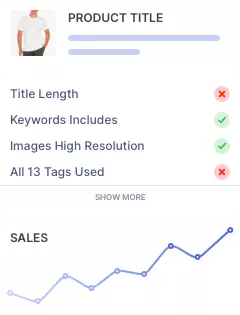10 Essential SEO Strategies for Fashion E-commerce Sites
Today’s digital environment requires businesses to establish an effective online presence to ensure business success. One crucial aspect of online success is search engine optimization (SEO). SEO is the procedure of enhancing a website’s rank in search engine results in order to draw more visitors and, ultimately, more customers. Search engine optimization (SEO) might be an intensive and time-consuming endeavor requiring ongoing attention.

In this guide, we’ll talk about SEO for fashion e-commerce and outline 10 essential strategies that can help your website achieve higher rankings and bring in additional visitors for business success. No matter your level of marketing expertise, these strategies will give you a firm foundation for optimizing your website and finding success online.
Definition and Importance of SEO for Fashion E-commerce Sites
SEO is the method used to raise a website’s ranking on search engine result pages (SERPs). SEO is crucial for fashion e-commerce sites to draw in customers and enhance sales. With competition in fashion becoming ever fiercer, businesses find it increasingly challenging to differentiate themselves and stand out. With the aid of SEO, online fashion shops can distinguish themselves from the competition. By improving their website’s ranking in SERPs, fashion e-commerce sites can drive more traffic, increase brand visibility, and ultimately increase sales. By optimizing the site’s structure, content, and product pages, fashion e-commerce sites can provide customers with a more seamless and intuitive browsing experience.
10 Essential SEO Strategies
Below are the top 10 SEO strategies for a fashion site:
1. Optimize Your Site for Mobile
Mobile technology usage is on the rise, and more individuals are accessing the web from mobile phones or other portable devices. Therefore, optimizing your site for mobile devices is of utmost importance and must be user-friendly for easy navigation. One way of optimizing your site for mobile is through responsive design.
Responsive web designs allow your site to adapt its layout according to the screen size of whatever device your visitor is using, providing optimal viewing experiences across devices and screen sizes. Your website should look fantastic no matter the device it’s viewed on – whether desktop computer, tablet, or smartphone.
2. Conduct Keyword Research
Carrying out extensive keyword research is crucial to improving the search engine optimization of your fashion e-commerce website. This entails figuring out what terms people key in search engines to locate products that you offer. Before beginning your keyword research, create a list of words relevant to your products and business. Discovering high-volume and low-competition keywords is the goal of keyword research. Including these words in your content will increase your site’s rank in SERPs and, in turn, your visitor numbers.
When choosing keywords, consider user intent. An awareness of keyword intent will enable you to develop content tailored specifically to the needs and desires of your target audience. After selecting your target keywords, you should carefully use them throughout your website’s text. Be wary not to overuse keywords, which could result in keyword stuffing and degrade your SEO efforts.
3. Optimize Your Site’s Structure
Structured websites are essential for SEO as they allow search engines to better comprehend your hierarchy and organization of content, making it easier for them to index pages quickly, which in turn increases visibility in search results. Start improving your site’s structure by sorting your content into meaningful categories. This can help users easily navigate your website and quickly find what they’re searching for. Also, search engines may better comprehend the relationships between pages on your site and the keywords they should associate them with.
One way to organize your content is by using a silo structure. This involves grouping related pages together under a broad category, with each subcategory becoming more specific as you move down the hierarchy. For instance, if you sell women’s apparel, such as dresses, you could create categories under “Dresses” with additional subcategories for “casual dresses” and “evening dresses”. Once your website structure is laid out, take special note to pay attention to its URL structure. The URLs must be clear and user-friendly. Avoid long strings of numbers or characters, as these could become overwhelming for visitors and search engines alike. Include your target keywords in your URLs. This may help them rank higher in search results.
4. Optimize Your Product Pages
Product pages are the cornerstone of an e-commerce store and provide customers with information on your products. Optimizing these product pages can increase visibility and drive additional visitors to your website – leading to more sales as a result!
Here are tips:
- Use Descriptive Product Titles: The product title is the first thing potential customers see in search engine results, so make sure it’s descriptive and contains the keywords you’re targeting. Avoid generic titles and include specific details about the product, such as the brand, style, color, and size.
- Write Unique Product Descriptions: Product descriptions should be unique and provide valuable information about the product. Use words of your own choosing to explain the product, its features and potential benefits. It is essential to include applicable keywords in the product description. Nevertheless, you should avoid overusing keywords.
- Optimize Product Images: High-quality product images can help increase sales and improve your site’s SEO. Incorporate high-quality images displaying the product from all angles, and make sure to include appropriate keywords in the image file names and alt tags.
- Include User Reviews: User reviews can provide valuable information about your products and improve your site’s SEO. Send follow-up emails after every purchase to prompt customers to write reviews, making it simple for them to provide their input on your site. User reviews also add unique content that improves search engine rankings of product pages on your website.
- Provide Clear Calls-to-Action: Make it clear to potential customers how they can purchase your products. Include prominent calls-to-action like “Add to Cart” or “Buy Now,” on every product page to simplify purchasing and ensure an effortless purchasing experience.
If you optimize your product pages for search engines, you may notice an increase in site visitors and, in turn, sales. Keep in mind that optimizing your product pages for search engines is an ongoing activity.
5. Use Social Media to Drive Traffic
At this age, a world without social media is unthinkable. Social media platforms provide great spaces to showcase products, engage with audiences and market your brand.
To take advantage of social media, you can:
- Figure out which channels are most popular among your intended audience.
- Create a strategy that supports your business goals.
- Post first-rate, visually appealing content regularly
- Interact with your audience and reply to their messages and remarks.
- Increase your visibility by using trending hashtags.
- Run social media ads to promote your products and drive traffic to your site.
Instagram and Pinterest are widely considered two of the top platforms for fashion e-commerce social media marketing. Instagram is an engaging visual platform that allows you to display your products in a creative and engaging way. It provides the ideal platform to share product images, behind-the-scenes footage, customer testimonials, and any other visual content that shows your brand story.
Another great visual medium for fashion e-commerce businesses is Pinterest. It allows you to create boards where you can save and organize your product photos, as well as photos from other sources that inspire your brand.
6. Write Quality Content
Writing high-grade content is crucial for fashion e-commerce sites that want to improve their SEO rankings. Content helps you establish your brand’s expertise, authority, and trustworthiness (E-A-T), which is an important factor in Google’s search algorithm. One way to create high-quality content is by writing blog posts that offer something valuable and applicable to your target audience. For instance, if you sell ladies’ outfits, you can create blog posts about fashion trends, outfit ideas, or style tips. You can also write product-specific how-to guides or tutorials.
Another way to create high-quality content is by optimizing your product descriptions. As opposed to simply listing features of your products, use descriptive language that emphasizes how these can benefit customers. For example, instead of saying “black dress with pockets,” you could say, “This little black dress will make you feel confident and stylish, and its convenient pockets are perfect for carrying your essentials.”
7. Create Backlinks
When other sites link back to yours, it may boost your site’s authority and visibility in SERP. High-quality backlinks from authoritative sites in your field should be your first target. Guest posting is a great link-building strategy. Contact websites within the fashion industry and see if you can contribute a guest article. On the guest post, you can promote your own site by including a link to it. This not only builds a backlink but also drives traffic to your site from the other site’s audience. Link-building may also be accomplished via strategic alliances with similar fashion companies.
8. Use internal linking
An essential part of on-page SEO is creating inbound links from one page to another inside the same domain. Not only can search engines understand your site more quickly and accurately, but this also allows visitors to more easily navigate it and locate relevant information.
Below are tips to utilize internal links effectively:
- Use descriptive anchor text: The text used as a hyperlink should provide a fair summary of the information that can be found on the destination page. Don’t just write “click here” or “read more.”
- Create relevant links: When creating internal links, it’s important to keep them contextual.
- Use a logical site structure: Make use of categories and subcategories to group related information together, and ensure that each page has many outbound links.
- Limit the number of links per page: Although internal links are beneficial, they should not be overused. Too many links on a page can be overwhelming and confusing for users, and may even be penalized by search engines.
Overall, internal linking is a powerful tool for improving the SEO of your website, so make sure to utilize it effectively.
9. Monitor and analyze your site’s performance
Monitoring and analyzing the performance of your site are vital in understanding how well it’s operating and pinpointing areas for improvement. You can use the below metrics to monitor your site’s performance:
- Google Analytics: You may learn a lot about your website visitors by using this free tool. Information gleaned from tracking can include visitor numbers and interactions on your site.
- Page Speed Insights: This tool evaluates the rate at which your website pages are loaded and suggests improvements.
- A/B testing: The process entails making two variants of a website and comparing their respective performance.
- Heatmaps: Heatmaps track how users interact with your site by recording their clicks, taps, and scrolling behavior.
10. Utilize Roketfy to streamline your SEO efforts
At Roketfy, we understand the unique challenges that fashion e-commerce sites face regarding SEO. Therefore, we have created an arsenal of tools and solutions to aid your SEO efforts and maximize website performance.
Our AI writer can help you create high-quality, SEO-friendly product descriptions and blog content, while our AI reviews tool can help you monitor and respond to customer feedback in real time. Additionally, our site listing checker tool can assist in identifying and rectifying any technical issues which are hindering your SEO performance. By utilizing Roketfy’s tools and solutions, you can optimize your fashion e-commerce site for SEO and stay ahead of the competition.
Conclusion
Optimizing an e-commerce website for SEO may seem like a complex and time-consuming endeavor, yet it is absolutely crucial for driving traffic and sales growth. By following the tips we have presented in this guide, you’ll soon be on your way to improving your search engine rankings and ultimately increasing revenue.
If you’re looking for comprehensive SEO tools to help you with your e-commerce SEO efforts, Roketfy tools are the perfect solution. With features like keyword research, competitor analysis, and on-page optimization tools, Roketfy can help you streamline your SEO strategy and get the results you need to succeed. Don’t wait any longer, sign up for Roketfy now and start improving your e-commerce site’s SEO today!




